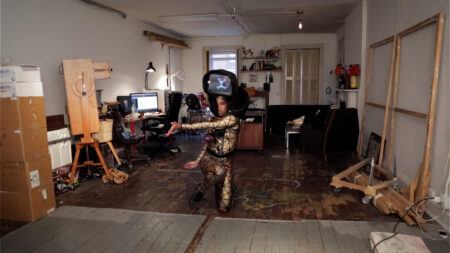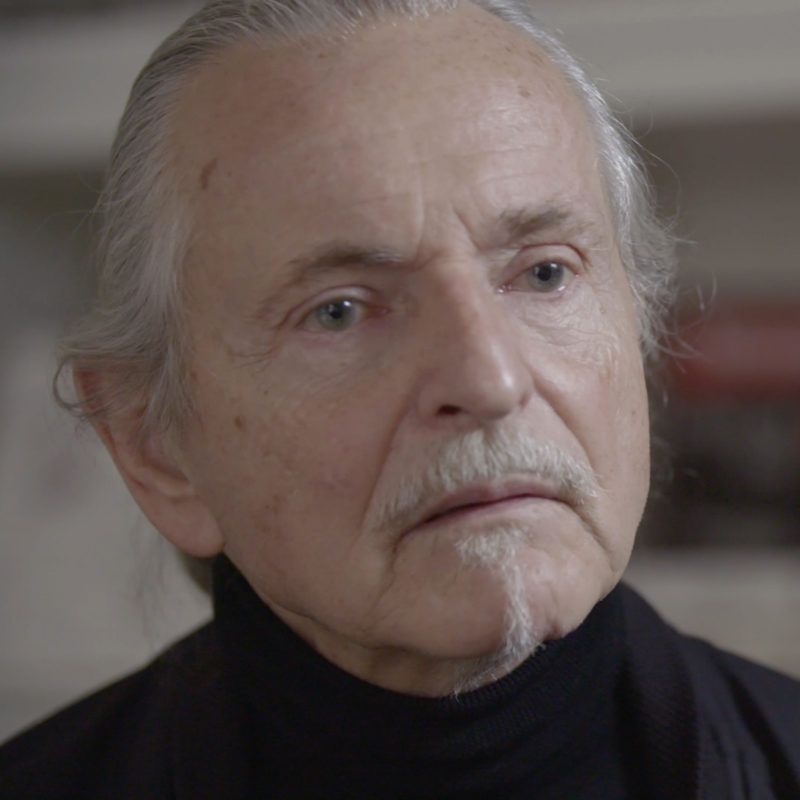Continue playing
(Time remaining: )
Play from beginning
Continue playing "{{ controller.videos[controller.getVideo(controller.currentVideo)].segmentParentTitle}}"
{{controller.videos[controller.getVideo(controller.currentVideo)].title}} has ended.
Designer Adam WhitonKrzysztof Wodiczko
Filmed at the Interrogative Design Group offices at MIT in Cambridge, Massachusetts, designer Adam Whiton discusses his work with artist Krzysztof Wodiczko. By developing innovative technology for projects such as The Tijuana Projection (2001), Dis-Armor (1999–2000), and Aegis (2000), Wodiczko and Whiton explore the potential for design to be used in a way that will “get people to think more…trigger questions and make people uncomfortable.”
Credits
Producer: Wesley Miller & Nick Ravich. Interview: Susan Sollins. Camera: Gary Henoch. Sound: Steve Bores. Editor: Joaquin Perez. Artwork Courtesy: Interrogative Design Group & Krzysztof Wodiczko. Special Thanks: Catherine Tatge, the Center for Advanced Visual Studies, the Massachusetts Institute of Technology (MIT). @ 2011, Art21, Inc.
Closed captionsAvailable in English, German, Romanian, Italian, Japanese, Korean, Chinese, Italian
Through the Art21 Translation Project, multilingual audiences from around the globe can contribute translations, making Art21 films more accessible worldwide.
Interested in showing this film in an exhibition or public screening? To license this video please visit Licensing & Reproduction.
By appropriating public buildings and monuments as backdrops for projections, Krzysztof Wodiczko focuses attention on ways in which architecture and monuments reflect collective memory and history. Projecting images of community members’ hands, faces, or entire bodies onto architectural façades, and combining those images with voiced testimonies, Wodiczko disrupts our traditional understanding of the functions of public space and architecture. He challenges the silent, stark monumentality of buildings, activating them in an examination of notions of human rights, democracy, and truths about the violence, alienation, and inhumanity that underlie countless aspects of social interaction in present-day society.
Collaboration
Laurie Simmons
William Kentridge
Laylah Ali

